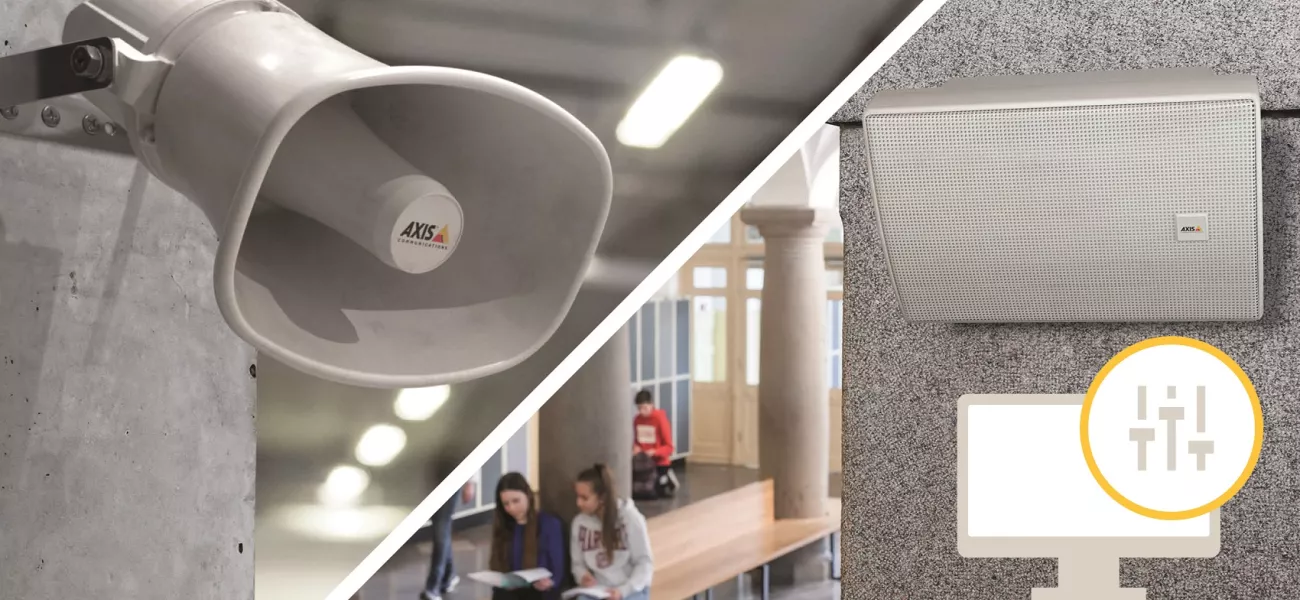
As technologies mature, new and improved technologies appear, reducing cost, optimizing resources, increasing efficiency, and providing new ways to operate. Network audio is playing a role in today's business operations.
As technologies mature, new and improved technologies appear, reducing cost, optimizing resources, increasing efficiency, and providing new ways to operate. Commercial audio systems have been used for a number of years to play messages (i.e. paging) and background music. These systems are common in commercial buildings, schools, hospitals, offices, retail, among others. Nevertheless, these systems are complex to setup, maintain, and limited to be used in specific areas with dedicated equipment, and sometimes limited to operate in a certain way.
IP devices and systems connected to the network has become a standard for organizations of all sizes and industries. More and more services and devices are connected to IP networks taking advantage not only of the same infrastructure but also new ways to interact and communicate with other systems. Network audio is a recent technology that is broadening the range of applications and use cases with audio from producing a faster response to optimizing human resources, and even providing a better service for staff and customers. But what makes network audio different from existing analog audio systems?
One of the big differences between analog and IP audio systems is simplicity. Traditionally an audio system consists of different equipment and components required to produce sound. However, an IP audio system has all the components and equipment inside of each device and to make things even better, the only type of cable and connector used is the same for any network device.
Another difference is scalability and flexibility. Do you want to start small with only one IP speaker or a few devices in one area? Or do you require a system to cover a whole building or facility? What if you want to change or update your audio zones after the system has been installed? Do other departments or users need access to the audio system? Requirements and needs change over time as well as the number of areas that require a service. Network audio brings the flexibility to adjust as requirements change. Network audio can also be easily integrated with other systems and platforms in the organization. For instance, the security department can use the network audio devices as an additional layer in their security system, whereas the safety department can communicate important messages to staff and visitors when required. Finally, the operations department can page personnel or schedule messages or reminders through the audio system. All different applications can use the same audio system sharing the cost without compromising the benefits.
Changes in settings and programing are all done through software. Moreover, if there is a need to make a change in the system this can be done remotely. For centrally managed systems, such changes can be done from a regional office, HQ, or the service provider’s company.
One more difference is that audio tuning and complicated adjustments are a thing of the past. Network audio devices come pre-configured to work out of the box. The system will adjust settings automatically depending on the type of content (i.e. music, sound, voice), which also reduces a point of failure caused by changes made on the system (i.e. accidentally or unauthorized). Basically, the only setting that can be changed is volume but only if the user has permissions to do so.
A concern with all network devices and systems is cybersecurity. Good practices are important to reduce the risk of an attack on any network device. Network audio includes methods such as digital certificates, TLS connections, and 802.1x authentication. There are also additional resources available to complement the methods described below. These include device hardening guides and templates, and the publication of cybersecurity vulnerabilities (CVE) online.
There is more than sound when it comes to a network audio system. At a first glance, network audio covers the same use cases as an analog audio system but as discussed in the previous paragraphs, there are new and better ways to leverage these systems in a range of applications and thanks to the use of IP networks, network audio can be part of solutions with systems and devices that it was not possible before.
Are you interested in learning more about solutions and use cases with network audio? Let’s connect to walk through an array of scenarios and solutions that fit your business operations and needs. Let’s amplify your security, safety, and operations projects with network audio!